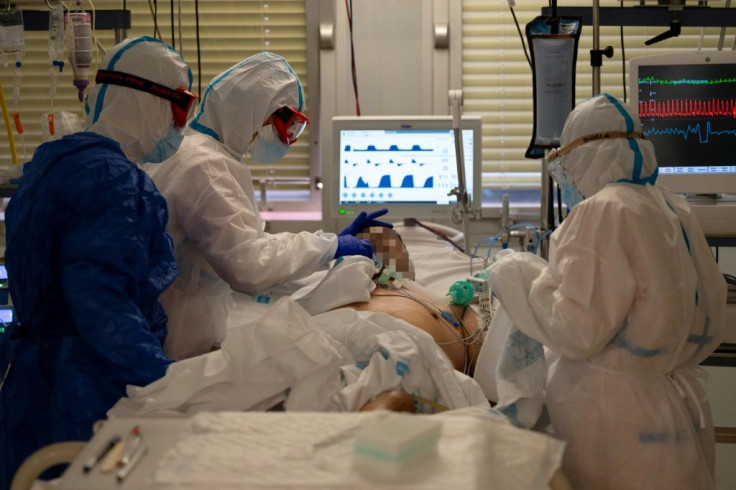US Coronavirus Deaths Could Total 95,000 From Now Until Jan. 1, IHME Predicts
KEY POINTS
- An IHME model projects that 95,000 more could die from the coronavirus from now until Jan. 1
- If COVID-19 safety precautions are eased, the country could see a total death toll of 338,000 by next year
- Imposing universal mask-wearing could bring the total deall toll down to 276,856
New projections for the coronavirus death toll in the U.S. were released last week by the University of Washington's Institute for Health Metrics and Evaluation (IHME).
The projections released Oct. 15, for deaths that could occur through Jan. 1, depend on several factors.
According to the new model, the country may see more than 95,000 COVID-19 deaths from now until the start of 2021, which will bring the total death toll to 316,935. If coronavirus precautions are eased, the number may increase to more than 108,000 deaths, or a total toll of 338,735.
However, if 95% of the nation's population adopts mask-wearing, the IHME predicts about 276,856 total deaths, which means requiring face masks could save nearly 40,000 lives.
Multiple states are experiencing a resurgence of the novel coronavirus, with health officials reporting at least 700 deaths each day. The IHME model projects that if the country begins lifting COVID-19 restrictions, the daily death toll could reach 3,460 by Jan. 1. If current measures stay in place, the model predicts 2,171 daily deaths.
If the U.S. adopts a universal mask-wearing mandate, that measure could lower the number of daily deaths to 1,019.
The IHME model also predicts that, with current measures in place, we could see more than 315,318 new infections daily, including in people not tested, by Jan. 1. Imposing mask-wearing could lower the number of daily infections to 163,925, while easing mandates would cause it to rise to over 626,500.
The U.S. reached an all-time high number of coronavirus infection in July, before it began dropping. But infections have started rising across the country again, with health officials reporting an average of 52,000 new cases daily. While many states in the Midwest and the West had relatively few cases until recent weeks, the numbers are now climbing.
Ali Mokdad, the professor who developed the model, said the data shows a cycle, where people begin changing their behavior only when cases spike in the community and return to their normal routines after the situation shows signs of improvement, NPR reported.
"We are on like a roller coaster in every location in the United States," Mokdad said. "We bring cases down, then we let down our guard. But this is a deadly virus — you cannot give it a chance to circulate."
According to Johns Hopkins University, the U.S. has reported more than 8 million confirmed coronavirus cases and 222,063 deaths as of Thursday.

© Copyright IBTimes 2025. All rights reserved.






















